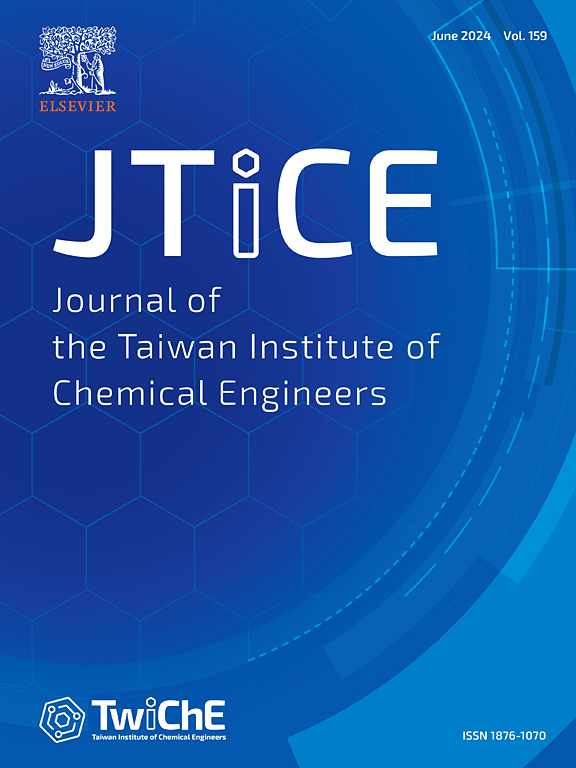Stabilize the oxygen vacancies in CuFe2O4 via altering local electronic structure by Co doping: Critical role of Co doping and photo-Fenton degradation of chloramphenicol
IF 5.5
3区 工程技术
Q1 ENGINEERING, CHEMICAL
Journal of the Taiwan Institute of Chemical Engineers
Pub Date : 2025-01-09
DOI:10.1016/j.jtice.2024.105936
引用次数: 0
Abstract
Background
The indiscriminate use of chloramphenicol (CHLORO) leads to its release into surface and groundwaters which causes the emergence of antibiotic-resistant bacteria that could pose a detrimental threat to human health and aquatic life.
Methods
Herein, we investigated the manipulation of lattice strain in CuFe2O4 (CFO) through cobalt (Co) doping and oxygen vacancies (OV) by a simple co-precipitation method for improved photocatalytic performance. The critical role of Co doping and photo-Fenton degradation of chloramphenicol CHLORO under visible light irradiation was investigated.
Findings
The study highlighted the enhanced photocatalytic degradation of CHLORO by Cu0.6Co0.4Fe2O4 nanocatalyst (Co-CFO-0.4 NCs) and it reached 99.8 % and the photocatalyst was stable even after 6th cycle. Here, the analysis of the CFO material indicates that Co doping creates unique compressive forces, whereas OV leads to tensile forces, both contributing to the enhancement of localized lattice strain. The Co-CFO-0.4 NCs exhibited 1.51 times enhanced photocatalytic activity than pristine compounds for CHLORO degradation. The predominant generation of hydroxyl radical (•OH) by Co-CFO-0.4 NCs along with contributions from hydrogen peroxide (H2O2), significantly increases the catalytic activity of the material, leading to complete degradation of CHLORO. The radical's formation was validated by using electron spin resonance (ESR) and scavenging studies. Additionally, the degradation pathway of CHLORO by Co-CFO-0.4 NCs were proposed and the possible toxicity associated with the intermediated were predicted. The study underscores the importance of engineering Ov and surface doping to enhance the performance of photocatalysts, thereby contributing to wastewater remediation.

求助全文
约1分钟内获得全文
求助全文
来源期刊
CiteScore
9.10
自引率
14.00%
发文量
362
审稿时长
35 days
期刊介绍:
Journal of the Taiwan Institute of Chemical Engineers (formerly known as Journal of the Chinese Institute of Chemical Engineers) publishes original works, from fundamental principles to practical applications, in the broad field of chemical engineering with special focus on three aspects: Chemical and Biomolecular Science and Technology, Energy and Environmental Science and Technology, and Materials Science and Technology. Authors should choose for their manuscript an appropriate aspect section and a few related classifications when submitting to the journal online.

 求助内容:
求助内容: 应助结果提醒方式:
应助结果提醒方式:


